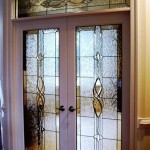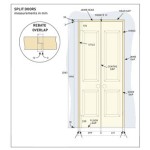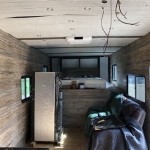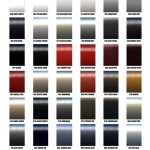How Much Does It Cost To Paint the Interior of a Home?
Determining the cost to paint the interior of a home involves a multifaceted assessment, influenced by numerous factors. These factors span the size of the project, the type of paint selected, the complexity of the preparation work required, and the geographical location of the property. Understanding these contributing elements is crucial for homeowners to accurately budget for and manage their interior painting endeavors.
This article provides a detailed breakdown of the costs associated with interior painting, aiming to equip homeowners with the knowledge necessary to make informed decisions. It will explore the key variables that influence pricing, offer insights into average cost ranges, and provide guidance on obtaining accurate estimates. Ultimately, the goal is to demystify the process and empower homeowners to confidently navigate the world of interior painting costs.
Factors Influencing Interior Painting Costs
Several key factors contribute to the overall expense of painting the interior of a house. These factors are interconnected and can significantly impact the final price, making it essential to carefully consider each one during the planning phase.
Room Size and Square Footage: The most direct influence on cost is the size of the area being painted. Larger rooms naturally require more paint and labor. Painters typically calculate costs based on square footage (the area of the walls to be painted) and linear footage (the length of baseboards or trim). The greater the square footage, the higher the overall cost.
Surface Preparation: Proper preparation is crucial for a lasting and aesthetically pleasing paint job. This may involve tasks such as cleaning, patching holes and cracks, sanding, and priming. If the surfaces are in poor condition, requiring extensive preparation, the labor costs will increase accordingly. For example, removing wallpaper, repairing water damage, or dealing with textured walls demands more time and expertise, adding to the overall expense.
Paint Type and Quality: The type and quality of paint selected significantly impact the final cost. Different types of paint, such as latex, acrylic, or oil-based, have varying price points and performance characteristics. Higher-quality paints generally offer better coverage, durability, and washability, requiring fewer coats and lasting longer. While a premium paint may initially seem more expensive, its longevity and superior finish can result in long-term cost savings.
Number of Coats: The number of coats required depends on the existing wall color, the new paint color, and the paint's opacity. Painting a light color over a dark color, or using a paint with poor coverage, may necessitate multiple coats. Each additional coat increases the amount of paint used and the labor involved, therefore raising the overall cost.
Labor Costs: Labor costs represent a significant portion of the total expense. Painters typically charge either by the hour or by the square foot. Hourly rates vary based on the painter's experience, location, and the complexity of the job. The preparation work, the application of multiple coats, and any intricate detailing all contribute to the total labor hours, and therefore, the cost.
Trim and Detail Work: Painting trim, baseboards, crown molding, and other architectural details requires specialized skills and additional time. These areas often require more precise application and may involve using different types of paint. The complexity of the trim work directly affects the labor costs involved.
Geographic Location: The cost of living varies significantly across different regions, influencing the pricing of goods and services, including painting services. Labor costs, material prices, and overhead expenses are typically higher in metropolitan areas compared to rural areas. Consequently, homeowners should expect to pay more for interior painting in cities with a higher cost of living.
Accessibility: Obstacles that hinder easy access to the areas being painted can also influence costs. Rooms with high ceilings, awkward layouts, or extensive furniture may require additional time and effort, potentially increasing labor expenses. Similarly, if the painter needs to move or cover furniture, this will be factored into the quote.
Average Cost Ranges for Interior Painting
Understanding average cost ranges provides a helpful benchmark for budgeting purposes. However, it is crucial to remember that these are just averages, and the actual cost will vary depending on the specific factors discussed earlier.
Cost per Square Foot: The cost to paint a room is frequently estimated by square feet. The average cost range is often between $2 to $6 per square foot. This typically includes basic surface preparation (patching minor holes and cleaning), applying one or two coats of paint, and protecting the surrounding areas.
Cost per Room: Another method of estimating the cost is by room. A small to medium-sized room (approximately 10x12 feet) could range from $400 to $1000 to paint. Larger rooms, such as living rooms or master bedrooms, could range from $800 to $2000 or more. Bathrooms and hallways are usually priced at the lower end of this range due to their smaller size.
Hourly Rate: Some painters charge by the hour, with rates ranging from $25 to $75 per hour or more. This method is commonly used for smaller jobs or when the scope of work is difficult to define upfront. It's important to agree on a detailed scope of work and an estimated timeframe to avoid unexpected costs.
Full House Painting: For painting the entire interior of a house, the cost can range from several thousand dollars to tens of thousands of dollars, depending on the size of the house, the condition of the walls, and the level of detail involved. A small apartment might cost between $1,000 and $3,000, while a large multi-story house could easily exceed $10,000. Remember to consider all the factors above when planning for full-house interior painting costs.
Factors Affecting Average Costs: These average prices can be affected by whether the walls need significant repair, if specialty paint is being used (e.g., low VOC, anti-mold), or if detailed decorative painting is desired (e.g., murals or stencils). These specialized factors will cause estimates to deviate from the norm, sometimes significantly.
Obtaining Accurate Estimates
Getting accurate estimates is essential to avoid surprises and ensure that the project stays within budget. It is highly recommended to obtain multiple estimates from different painting contractors before making a decision. The following steps can help homeowners secure accurate and reliable estimates.
Request Multiple Quotes: Contact at least three different painting contractors and request written estimates. This allows for comparing prices and services offered. Be wary of estimates that are significantly lower than others, as this may indicate subpar work or hidden costs.
Provide Detailed Information: Be as specific as possible when describing the scope of work. Clearly communicate the size of the rooms, the condition of the walls, the type of paint desired, and any specific requirements or concerns. This will enable the painters to provide accurate estimates.
On-Site Assessment: Insist on an on-site assessment by each contractor. This allows them to visually inspect the property, identify any potential challenges, and accurately assess the preparation work required. A contractor who provides an estimate without seeing the space firsthand may underestimate the true cost.
Review the Scope of Work: Carefully review the written estimates to ensure that they include all aspects of the project, such as surface preparation, paint type and quality, number of coats, trim work, cleanup, and any warranties. Look for any hidden fees or exclusions.
Check References and Reviews: Before hiring a painting contractor, check their references and online reviews. This provides valuable insights into their reputation, quality of work, and customer service. Look for consistent patterns of positive or negative feedback.
Verify Licensing and Insurance: Ensure that the painting contractor is properly licensed and insured. A license demonstrates that they meet the necessary qualifications and adhere to industry standards. Insurance protects homeowners from liability in case of accidents or damages during the project.
Understand Payment Terms: Clarify the payment terms with the contractor before starting the project. Typically, a deposit is required upfront, with the remaining balance due upon completion of the work. Avoid paying the entire amount upfront, and be wary of contractors who demand full payment before starting the project.
Get a Written Contract: Once a contractor has been selected, obtain a written contract that outlines the scope of work, the total cost, the payment terms, and any warranties. This contract serves as a legal agreement and protects both the homeowner and the contractor. Make sure the contract is thoroughly reviewed and fully understood before signing.
By following these steps, homeowners can secure competitive and accurate estimates, ensuring a successful and cost-effective interior painting project. Thorough preparation and diligent research are essential for a smooth process and a satisfying outcome.

Cost To Paint A House Whole Painting Fixr

Cost Of Painting A House Interior Comprehensive Guide

Interior House Painting Costs In Roseville Trico

Interior Painting Costs Per Square Foot Home Painters Toronto

Cost To Paint A House Whole Painting Fixr

Average Home Interior Painting Costs

Interior Painting Cost Per Square Foot Home Painters Toronto

How Much Does It Cost To Paint 1 600 Sq Ft Interior House Interiorpainting Costestimate

2025 Interior Painting Costs Average Cost To Paint Of House

Cost To Repaint Interior Of Home
Related Posts








